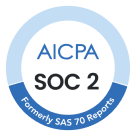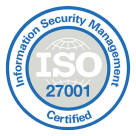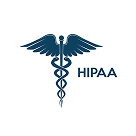
55.8 million Americans received counseling or mental health treatment in last year*. When someone reaches out for mental health support, they’re often taking a significant first step –one that requires both courage and trust.
Each voicemail greeting serves as a critical touchpoint between therapists and potential or existing clients. This makes voicemail systems the first therapeutic interaction a person experiences.
A study examining therapeutic communication found that successful therapists naturally modulate their voice throughout sessions*: beginning with a welcoming conversational tone, transitioning to a more structured “therapy voice,” and concluding warmly.
This same principle applies to voicemail greetings, where the right vocal approach can significantly impact patient comfort and trust. With that in mind, let’s see how the right voicemail script for therapists can improve their chances of getting new patients.
Key takeaways:
- Voice Modulation Impacts Trust Research shows that therapists who consciously adjust their vocal tone – from welcoming to professional and back to conversational – create stronger therapeutic alliances. Apply this same technique to your voicemail greeting.
- Security Builds Confidence HIPAA-compliant voicemail systems demonstrate commitment to patient privacy from the first interaction, establishing trust before treatment begins.
- Structure Creates Safety Clear, well-structured voicemail greetings that include response times and emergency resources help contain patient anxiety and set appropriate expectations.
Essential Factors to Consider Before Recording Your Voicemail Greeting
Imagine Max, a seasoned therapist who learned the hard way about voicemail importance. One rushed morning, she quickly recorded a casual greeting without mentioning emergency protocols.
That evening, a distressed client left an urgent message but didn’t know about alternative crisis resources. While the situation was eventually resolved, it highlighted why thoughtful voicemail setup matters for mental health professionals.
Here are the critical factors every therapist should consider before hitting that record button:
- First Impressions Matter: A warm, professional tone sets the foundation for trust. The voicemail greeting often serves as the first point of contact between a therapist and potential clients. The voice should convey both competence and compassion, much like the healthcare communication standards expected in modern practices.
- Confidentiality & HIPAA Compliance: Privacy isn’t optional in mental healthcare. Every voicemail greeting must align with HIPAA regulations to protect client information. This includes clear statements about confidentiality and careful consideration of what information callers should leave. Modern call center software for healthcare can help maintain these compliance standards effectively.
- Providing Clear and Useful Information: Strike the right balance between comprehensive and concise. Include essential details like office hours, response timeframes, and alternative contact methods. Avoid overwhelming callers with too much information that might be forgotten or misunderstood.
- Setting Expectations for Response Time: Clear communication about response windows builds trust. Whether it’s “within 24 business hours” or “by the next business day,” specific timeframes help manage client expectations and reduce anxiety about when they’ll hear back.
- Including Emergency Resources: Every mental health practice needs robust crisis protocols. The voicemail should clearly direct urgent cases to immediate help sources like crisis hotlines, emergency services, or on-call professionals. This guidance could mean the difference between a client getting timely help or facing a crisis alone.
Experience HIPAA-Compliant Calling With Our 14-Day Free Trial
Examples of Effective Voicemail Scripts for Therapists
Mental Health Practices
Large mental health organizations juggle high call volumes and diverse patient needs. Their voicemail greetings must efficiently direct different types of callers while maintaining a professional, unified brand voice.
These organizations often handle multiple specialties and providers, making clear navigation essential. Here are three effective approaches:
Clinic Voicemail Script for Group Practices
Group practices face unique communication challenges. They need voicemail greetings that balance personal connection with professional coordination among multiple providers.
The right message helps route callers efficiently while maintaining the intimate feel of a smaller practice. Consider these examples that emphasize both team accessibility and individual care:
Solo Practitioners
Independent therapists build their practice on personal connections. Their voicemail often serves as a crucial first impression for potential clients and a familiar touchpoint for existing ones.
The greeting should reflect the practitioner’s individual style while maintaining professional boundaries. These scripts demonstrate how to achieve that balance:
Best Practices for Therapist Voicemail Scripts
Dr. Chen thought his voicemail greeting was perfect until a new client mentioned how its clinical tone almost made her hang up. This experience transformed how he approached patient communication.
This disconnect could happen to every therapist, but it doesn’t have to happen to you.
Here’s what mental health professionals need to know about creating effective voicemail scripts:
Keep It Professional Yet Warm
Remember that anxious voice on the other end of the line? Imagine an anxious parent calling to check on their teen in depression treatment. Strike a balance between authority and approachability. Like our approach to health insurance communication, the tone should reassure callers they’ve reached a competent, caring professional.
Ensure Clarity & Conciseness
The 30-second rule exists for a reason. Most callers lose interest or forget details in longer messages. Keep your greeting focused and efficient, similar to how Medicare supplement scripts maintain clarity without sacrificing essential information.
Mention Your Name & Practice
Identity verification builds immediate trust. State your name and practice clearly, especially if you’re part of a larger healthcare organization. This helps callers confirm they’ve reached the right mental health professional.
Provide a Callback Timeline
Set realistic expectations about response times. Whether it’s “within 24 hours” or “by the next business day,” specific timeframes reduce client anxiety about when they’ll hear back.
Avoid Sharing Personal Health Information
Protected health information requires special handling. Never include diagnostic terms, treatment details, or other sensitive information in voicemail greetings. This aligns with healthcare communication standards and protects patient privacy.
Include Emergency Contact Information
Crisis situations require immediate response options. Every voicemail should include clear guidance for emergencies: “If this is an emergency, please hang up and dial 911, or contact the National Crisis Hotline at 988…”
Use a Secure Voicemail Solution
Modern mental health practices need modern solutions. CloudTalk offers HIPAA-compliant voicemail features that protect patient information while maintaining accessibility. Our platform includes:
- End-to-end encryption
- Custom access controls
- Automatic message logging
- Integration with existing healthcare systems
Looking for a HIPAA-compliant phone solution?
Ensuring a HIPAA-Compliant Voicemail Script
Security in mental healthcare communication extends beyond the therapy room. Healthcare call centers must maintain strict standards for every patient interaction, including voicemail systems. Here are the essential elements for maintaining HIPAA compliance in your voicemail communications:
- Use Secure Voicemail Services: Basic voicemail systems leave patient data vulnerable. Professional healthcare practices need encrypted voicemail services that protect sensitive information. Modern phone systems for healthcare offer end-to-end encryption and secure message storage, ensuring patient confidentiality at every step.
- Obtain Client Consent for Voicemail Communication: Documentation protects both practice and patient. Before leaving any voicemail messages, establish clear consent protocols. This includes written authorization specifying what information can be left in messages and preferred contact methods.
- Limit Disclosures in Outgoing and Incoming Messages: Less is more when it comes to protected health information. Keep voicemail greetings generic and instruct callers to leave only basic contact details. Avoid mentioning specific conditions, treatments, or any identifying medical information in automated messages.
- Implement Role-Based Access Control: Not everyone needs access to everything. Set up tiered access levels for voicemail systems, ensuring that staff members can only access the information necessary for their roles. This minimizes the risk of unauthorized access to sensitive patient communications.
- Regular Staff Training on HIPAA Guidelines: Knowledge gaps create compliance risks. Schedule regular training sessions on HIPAA requirements and best practices for voicemail handling. This includes updates on new regulations and refreshers on existing protocols to maintain consistent compliance standards.
- Audit Trail Maintenance: Keep detailed records of voicemail access and usage. Modern healthcare communication systems should provide comprehensive logging features, tracking who accessed messages and when. This creates accountability and helps demonstrate compliance during audits.
Crafting the Perfect Therapist Voicemail: Next Steps
The right voicemail greeting does more than answer calls –it builds trust, ensures compliance, and creates a foundation for therapeutic relationships.
As mental health practices evolve, their communication systems must keep pace with both technical requirements and patient needs.
Consider these implementation steps:
- Review your current voicemail greeting against the HIPAA compliance checklist
- Test your message length and content with colleagues
- Ensure your phone system provides the security features needed for healthcare
- Update emergency resources and response times regularly
- Document your voicemail protocols for consistent practice management
CloudTalk powers mental health practices with HIPAA-compliant features like encrypted voicemail, custom security controls, emergency routing, healthcare system integrations, and automated compliance updates.
Make Your Healthcare Communications HIPAA-Compliant
Sources:













